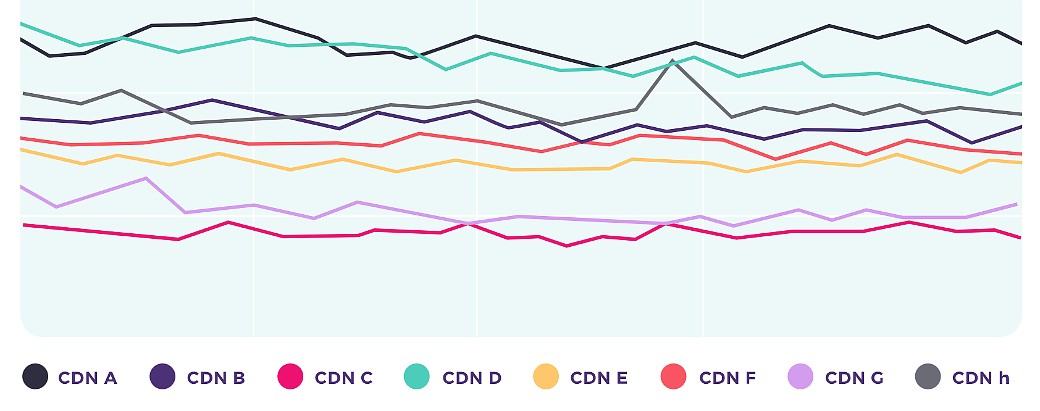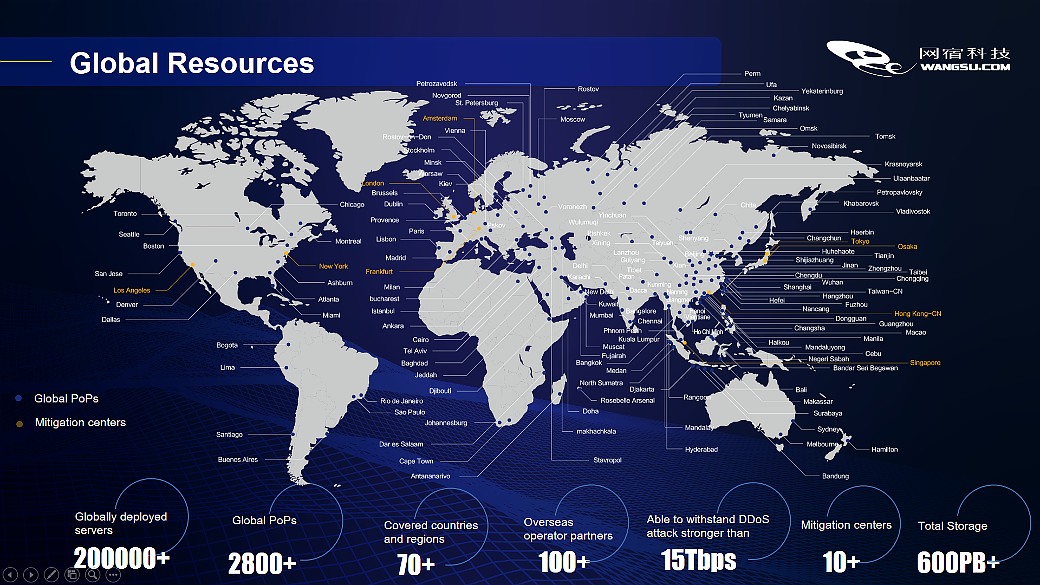What is CDN?
Content Delivery Network(CDN) are interconnected servers that systematically caches and distributes data closer to the users for a seamless browsing experience.
CDN is defined as,
Content Delivery Network (CDN) is the geographical distribution network of proxy servers, data and data centers designed to make web content more accessible to end-users.
The goal of CDN is to overcome the slow load time which often occurs due to network congestion. This was pertinent in the early days of the world wide web i.e www. Thanks to the CDN now users can access data within milliseconds.
A multi-CDN works just like a CDN. However, it uses more than one CDN to deliver data or web content with better speed and efficiency. You can switch between two or more CDNs based on your business needs.
In this article today, we will explain what is a multi-CDN, why you should use a multi-CDN, how it works, and some strategies to implement a multi-CDN.
Let’s get started!
What is Multi-CDN?
It is a combination of two or more CDNs working together efficiently to deliver video content or video streaming smoothly and seamlessly. It allows video streaming without buffering. A multi-CDN technology is often used for concerts, live events, and sports.
With multi-CDN you can stream content to the geographies where it is not possible to deliver content with a single CDN. It also adds an extra layer of security by minimizing DDoS attacks.
Why should you use Multiple CDNs or Multi-CDN?
There are several benefits of using multiple CDNs, including:
- Smooth and uninterrupted video streaming;
- It avoids failures by redistributing the load to other networks in case of a disaster. This is important so that your resources are available during critical business hours. A multi-CDN saves your credibility and business during these times. In case of failure of one CDN, it distributes traffic to all other CDNs, thus making the network 100% available;
- With multiple CDNs, you can easily replace one with another in case of a content delivery network outage;
- You will have reduced latency because of more servers;
- It provides flexibility and performance benefits which is obviously not available in the case of a single CDN;
- Multiple CDNs reduce the load on original servers and protect your network against DDoS attacks;
- It improves overall performance and reliability;
- Increased reach to global audiences;
- Improved page load times;
- Reduced cost;
- Manage large-scale traffic;
- Redundancy & availability;
- 100% Uptime.
How Multiple CDN Strategy works
A multi-CDN works by selectively routing traffic over different CDNs. Multiple CDNs from a myriad of providers can work together to provide a seamless experience. If one of the CDN experiences critical issues or is unavailable, the other CDN can pick up the pace to deliver content uninterruptedly. It is crucial in the case of gaming, or online videos and provides a great user experience.

What are the Key Components of Multi-CDN Strategy
The decision to switch to multiple CDN is based on the user’s needs and the industry’s best practices. Giants like Netflix, Amazon, and LinkedIn use multi-CDN strategies to achieve their business goals. A multi-CDN provides the best performance, and best coverage to meet the specific data delivery needs.
The two key components are:
Aggregation
It combines the functionality of all the CDNs and is controlled via one panel. You dont need to make changes to a single CDN, thus you save time. If you dont feel like making any customization, the aggregation method is the best for you.
Load balancing
It distributes the load to the most optimal server with the specific CDN. Based on the user’s region, it efficiently distributes the requests to avoid overload.
DNS management system
Efficient DNS management ensures quick data delivery, and page loads thus improving business opportunities, and great customer experience.
It is recommended to choose a solid plan for DNS because it accounts for 29% of the initial page load.
How to Implement A Multi-CDN Video Strategy
The main goal of choosing a multi-CDN is to offload the distribution of content among two or more CDNs. Switching between CDNs is done either manually or Commerical Decision Engine or with the help of a Domain Name System (DNS).
Some other factors that might include it are availability, performance, or traffic type.
The three main strategies of the multi-CDN include.
Static
In a static strategy, the DNS records are changed based on the user’s request for accessing the content.
Below are the other aspects you can keep in mind when choosing multi-CDN.
Things to keep in mind while implementing multi-CDN
Pick Providers that Work Well Together
If you choose providers like CDNVideo and CDNetworks, they work together well to fit your configurations and switching strategies seamlessly. This is important for an efficient transition from one CDN to another based on the user’s request. The Multi-CDN ecosystem of CDNvideo enables fault tolerance during failure.
It includes consistency of:
- Headers;
- Security tokens;
- Custom configurations.
Choose Providers that Entertain Video Content
The providers must entertain video-type content. Make sure the CDN providers you choose support video content. Some CDNs don’t support it which may cause a huge hassle.
Our CDNvideo is a seamless platform that partners with various CDNetworks to provide multi-CDN, large coverage, premium support, and a large amount of POPs.
Pay attention to whether the specific CDN you choose works in the same location as your target audience or not. Because not every CDN works in a specific location which might create problems at a later stage.
Pick providers that have PoPs near your target audience
To implement a multi-CDN video strategy pick providers that have points of presence (PoPs) near your target audience and make sure the cost will fit in your budget.
For example, CDNvideo + CDNetworks coverage work together to provide a seamless experience. Make sure you check them out to have a budget-friendly solution.

Architect a CDN Mix to Suit Your Needs
Implement a CDN mix architecture that can manage multiple CDNs easily. As a result, you won’t have issues with integration, engineering support, configuration, and other management solutions. It efficiently routes data using smart algorithms with its proven architect.
It Automates Switching Strategy to Fit Your Video Streaming
Multi CDN automatically switches between CDNs based on their performance in real-time. A multi-CDN balances the traffic among our network and CDNetworks by automatically switching between CDNs. This has to be based on your budget, internal operations, and the client’s needs. You can pay attention to the following aspects:
- Commit-based rules;
- Performance-based rules.
Traffic routing in Multi-CDN
What differentiates a multi-CDN is it selectively routes traffic over different CDNs in the network. It offers the following options for traffic routing;
Managed DNS
If the CDN fails, it automates the manual aspects and automatically offloads users from non working CDN.
Geo-location
Based on the various request from different geographies, a multi-CDN defines which CDN would receive traffic from specific countries.
Variable-Driven Load Balancing
Several multiple CDNs make the decision based on cost, performance, location, weights, and other criteria. Thus, it becomes the most cost-effective multi-CDN to load balance.
Conclusion
100% seamless video streaming to the end user is not practically possible. However, you can optimize online video streaming by making the resources available as soon as your user puts in a request. And, a multi-CDN plays a crucial role in that.
A multi-CDN will create an uninterrupted & smooth streaming experience. If you have a global audience, and streaming your data all across the world, choose CDNVideo for a reliable, and high-quality streaming solution.



